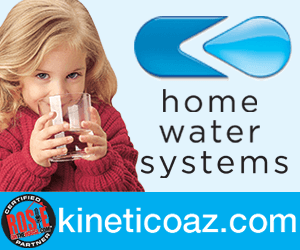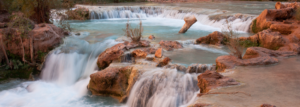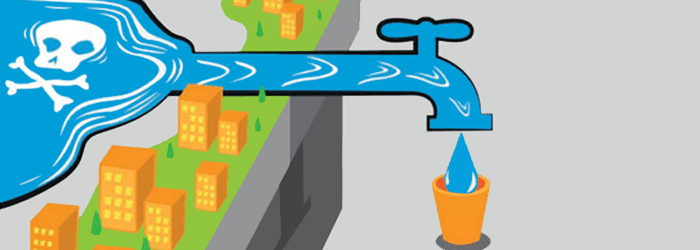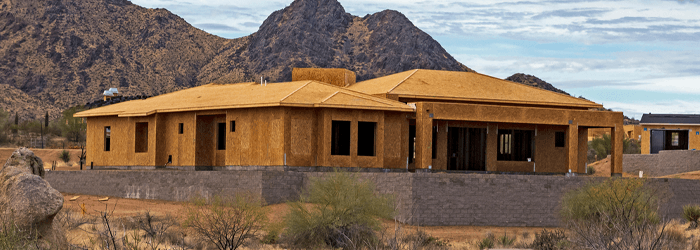Rainwater Declared Unsafe To Drink
We have covered the abundance of minerals in Arizona’s water in depth. But there is something else in our water and the water all over the planet that is also concerning.
PFAS PSA
PFAS (Per- and polyfluorinated alkyl substances), also known as the “Forever Chemicals,” are a large chemical family of more than 9,000 highly persistent chemicals that don’t occur in nature. These are manufactured chemicals.
CHEMTrust reports that PFAS are the most persistent synthetic chemicals to date. They hardly degrade in the natural environment and have been found in the blood and breast milk of people and wildlife around the world.
9AM! Have you ever heard of PFAS’s aka forever chemicals? Jon Owens of @kineticoaz explains what they are and how we can get them out of our drinking water. Learn the ins and outs of all things #watertreatment!https://t.co/GzmdmT9BoI pic.twitter.com/scH3ozURUU
— RosieontheHouse (@RosieontheHouse) August 6, 2022
PFAS are used in a wide range of consumer products due to their ability to repel both grease and water, including:
- paper and cardboard food packaging
- non-stick cookware
- textiles
- cosmetics
- electronics
We are exposed to hundreds of PFAS simultaneously via some of the products we use every day, as well as via environmental routes such as drinking water and certain foods. Because it is extremely challenging for water treatment plants to remove PFAS from water, contamination of drinking water with PFAS is a rising issue.
Rainwater
You may want to think twice about sticking your tongue out to gather a few drops of rain.
PFAS Project Lab reports that new research estimates it’s unsafe to drink rainwater anywhere across the globe. Having spread globally in the atmosphere, these human-made and harmful chemicals can be detected in rainwater and snow even in Earth’s most remote locations.
PFAS in rainwater were evaluated in a perspective article published in Environmental Science & Technology that looked at the concentrations of four PFAS in samples of rainwater, soil, and surface water from across the globe. The resulting concentrations revealed that the levels of PFAS greatly exceeded guidelines from the US Environmental Protection Agency Lifetime Drinking Water Health Advisory.
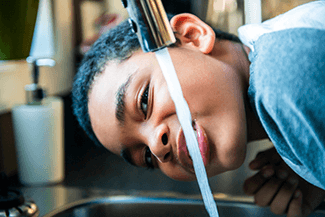
GreenMatters reported on August 2, 2022, that researchers concluded “rainwater everywhere is unsafe to drink based on EPA’s new health advisories,” according to a spokesperson for the Green Science Policy Institute.
Drinking Water
PFAS is just another reason why a home water treatment system makes sense.
“We depend on the city to sanitize the water,” says Andrea “Andi” Pettyjohn, owner of Water Treatment Technologies, Inc., a Rosie-Certified Partner.
And they do, up to the point where it reaches the meter. No need to buy bottled water. Food and Water Watch estimates that up to 64% of bottled water in the United States comes from municipal water systems.
If your priority is to further sanitize the water that enters your home, then it is up to you to take the next step. You can do that with a Reverse Osmosis (RO) System, as explained by Water Technologies, Inc.
RO is a type of filtration that removes contaminants from water by using pressure to push the water through a semi-permeable, thin membrane with pores small enough to pass pure water through while rejecting larger molecules such as dissolved salts (ions) and other impurities such as bacteria.
The Interstate Water Technologies Council says that RO membranes are effective in removing most organic and inorganic compounds from water solutions and have been shown to be highly effective in removing measurable PFAS.
An RO system is DIFFERENT from a water softening system.
Home water softeners, also called ion exchange units, remove calcium, magnesium, and other minerals from drinking water. Resin beads inside the softener trap the calcium and magnesium and exchange them for sodium or potassium. Despite removing minerals, a water softener will not sanitize the water.
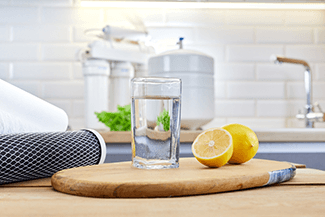 Pettyjohn says that many people request RO for the entire house. She suggests they reconsider just the drinking water. Because the process makes the water flow slowly, a holding tank that can fill at least three bathtubs worth of water is needed. Plus, she says, purified water is not needed for laundry and dishes. So why would you want that extra expense to purchased and maintain?
Pettyjohn says that many people request RO for the entire house. She suggests they reconsider just the drinking water. Because the process makes the water flow slowly, a holding tank that can fill at least three bathtubs worth of water is needed. Plus, she says, purified water is not needed for laundry and dishes. So why would you want that extra expense to purchased and maintain?
A common myth, Pettyjohn says, is that RO wastes too much water. People buy bottled water thinking that it takes less water to produce a bottle. What they don’t realize is that bottled water is created using the same process as a home RO system. The waste is minimal. It equates to just two toilet flushes a day for a four-person family.
Pro Tip: Because RO is a closed system, the water sits in the tank. If you leave your home empty for a couple of months, when you return, empty the storage tank and allow the RO system to refill it.
In the Plumbing Loop
A plumbing loop is a pre-plumbed option that may have been installed when your home was built, but it is not likely. If you do have a loop, it’s probably near the water heater. The loop allows the water softener or whole house water filtration system to be easily installed and provides treated water to faucets, including the refrigerator.If you don’t have a loop and want treated water from the refrigerator, you can add it, but it could cost you more than it’s worth. If you are building a new house, Pettyjohn suggests insisting on having the whole kitchen plumbed with a full line. It’s roughly an extra $1,000 expense for a new build.
Another Drop of Information
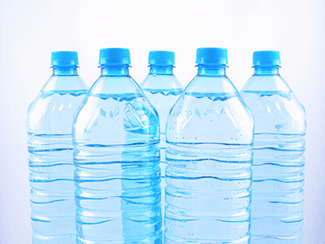 Bottled water makes us thirstier. In a recent article published by Mashabale, they note that Time Magazine claims that both Dasani and SmartWater contain a handful of additives that lead to different reactions out of their consumers, one of which being thirsty, which then requires the consumer to buy another bottle of water. Consumerism at its best.
Bottled water makes us thirstier. In a recent article published by Mashabale, they note that Time Magazine claims that both Dasani and SmartWater contain a handful of additives that lead to different reactions out of their consumers, one of which being thirsty, which then requires the consumer to buy another bottle of water. Consumerism at its best.
Whether you want to reduce contamination or just leave your skin and hair soft after a shower, it is worth the time to look into water treatment
options.
When shopping for any water treatment equipment, insist on only equipment certified by the Water Quality Association and be sure to read Rosie’s Water Treatment Guide as you do your research.
###
PODCAST
We’ve covered the abundance of minerals in Arizona’s water in depth. But something else in our water and the water all over the planet that you should know. Jon Owens of Rosie Certified Kinetico Water Systems explains something known as ‘forever chemicals’. While cities to a great job providing safe water, Jon gives you straight talk on improving water quality in your home if you’re considering it. Plus listeners have their water treatment questions.
PHOTO CREDIT:
- Shutterstock
RELATED CONTENT:
- Blog: Water Usage Conservation



